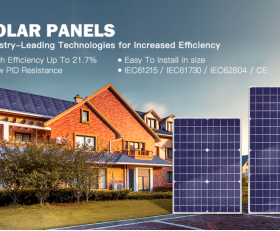Advancements in Inverter Technology by 2025: Revolutionizing Household Energy Storage and Battery Recycling
In recent years, the world has witnessed a significant shift toward renewable energy sources, driven by the urgent need to combat climate change and reduce reliance on fossil fuels. A critical component in this transition is the inverter, a device that converts solar energy from Direct Current (DC) to Alternating Current (AC), making it usable for household appliances. By 2025, advancements in inverter technology are expected to play a pivotal role in enhancing the efficiency and sustainability of household energy storage systems, while also contributing to the development of battery recycling practices.
The Evolution of Inverter Technology
Inverters have come a long way since their inception. Early models were bulky, inefficient, and limited in functionality. However, with the advent of advanced materials, smarter algorithms, and integration of Internet of Things (IoT) capabilities, modern inverters are becoming more compact, efficient, and intelligent. By 2025, these devices are projected to be at the forefront of the renewable energy revolution, enabling households to store and utilize solar energy more effectively.
Key Advancements in Inverter Technology by 2025
Higher Efficiency and Lower Costs One of the most significant advancements in inverter technology is the improvement in efficiency. Modern inverters are designed to minimize energy loss during the conversion process, which translates to more energy reaching the household grid. Additionally, advancements in semiconductor materials, such as wide-bandgap (WBG) materials like silicon carbide (SiC) and gallium nitride (GaN), are enabling inverters to operate at higher temperatures and frequencies, further enhancing their efficiency. These innovations are also contributing to cost reductions, making solar energy systems more accessible to a broader range of consumers.
Smart Inverters with IoT Integration By 2025, inverters are expected to become smarter and more connected. The integration of IoT capabilities will allow inverters to communicate with other devices in the household, such as solar panels, batteries, and smart appliances. This connectivity will enable real-time monitoring of energy production, consumption, and storage, allowing homeowners to optimize their energy usage for maximum efficiency. For instance, smart inverters can adjust energy output based on time of day, weather conditions, and grid demand, ensuring that households make the most of their renewable energy resources.
Bidirectional Charging and Storage Another groundbreaking advancement in inverter technology is the ability to facilitate bidirectional energy flow. Modern inverters can not only convert DC to AC but also charge DC batteries using excess energy generated by solar panels. This bidirectional capability is particularly important for households that rely on battery storage systems to store surplus energy for later use. By 2025, inverters with advanced battery management systems (BMS) will be able to optimize battery performance,延长使用寿命,并减少充电时间.
Support for Emerging Energy Storage Technologies As battery technology continues to evolve, inverters are being designed to work seamlessly with next-generation energy storage systems, such as solid-state batteries and flow batteries. These advanced battery types offer higher energy density, longer lifespans, and improved safety, making them ideal for household energy storage. Inverters with built-in compatibility for these technologies will ensure that homeowners can take full advantage of the latest advancements in battery storage.
The Role of Inverter Technology in Battery Recycling
The growing adoption of renewable energy systems and energy storage solutions has also raised concerns about the environmental impact of battery waste. As batteries reach the end of their lifecycle, proper recycling and disposal are crucial to minimizing electronic waste and recovering valuable materials. Inverter technology plays a key role in this process by enabling better monitoring and management of battery health.
Smart inverters equipped with IoT capabilities can track the condition of batteries in real-time, providing valuable data for recycling companies. This data can help optimize the recycling process, ensuring that batteries are disassembled and processed in an environmentally friendly manner. Additionally, advancements in inverter technology are expected to improve the efficiency of battery charging and discharging, reducing wear and tear on batteries and extending their usable lifespan. By prolonging battery life, these technologies can reduce the overall demand for new batteries, thereby decreasing the environmental footprint of energy storage systems.
The advancements in inverter technology by 2025 are poised to transform the way households manage and store energy, while also supporting sustainable battery recycling practices. With higher efficiency, smarter functionality, and greater compatibility with emerging energy storage technologies, inverters are set to play a central role in the global transition to renewable energy. As the world continues to prioritize sustainability and environmental stewardship, these innovations will be instrumental in creating a cleaner, greener future for generations to come.

